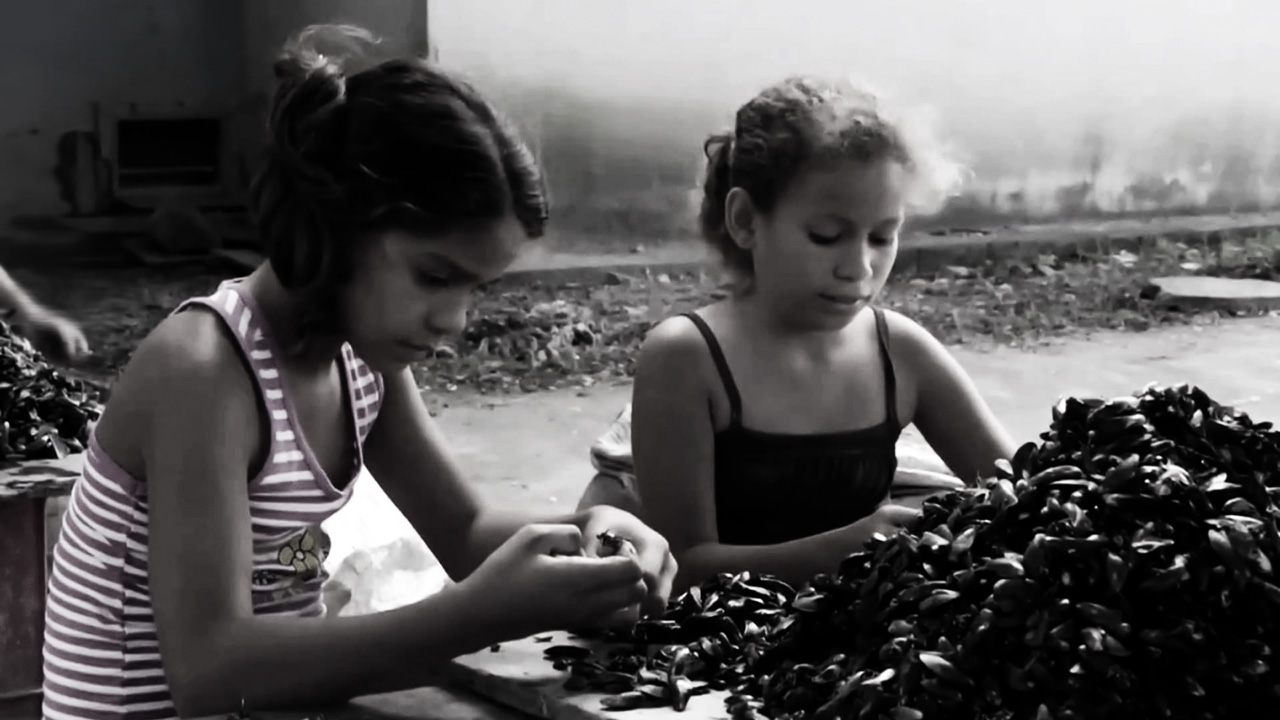A 2018 report commissioned by the International Labour Organization (ILO) and Brazil’s Labour Prosecution Office showed that at least 8,000 Brazilian children and teenagers currently work in the chocolate production chain alone. Brazil’s Neofascist Brazilian President, who this week told the powerful ruralista agriculture lobby that “this government belongs to you”, isn’t just fine with this, he evidently thinks that child labour should be liberalised and expanded.
By Bruno de Oliveira
This week Jair Bolsonaro delivered a speech defending child labour, and even attacked those who protest against it, comparing working on a farm favourably to the “alternative” of smoking crack. Is that really what is left for the future of Brazilian children? drugs or child labour? These narrow, binary choices show the level of Bolsonaro. How about investing in cutting edge education? I can only imagine Bolsonaro saying to the Ministry of Education of Finland, a country that has one of the best education systems in the world, that Finland could learn a thing or two about education with Brazil. Under Bolsonaro, The Brazilian educational policy is the brick or the rock.
During the speech, Bolsonaro elaborated: “Look, working nine, ten years old at the farm, I was not harmed at all. When a 9 or 10 year-old kid goes to work somewhere, it is full of people there talking about ‘slave labour’…or I do n’t know, ‘child labour’. Now, when he is smoking a rock of crack, no one says anything.” he continued, “I remember perfectly that one of the things that were planted there, besides banana, was corn. And at that time for you to cut the corn, you did not have to get on the plantation and pick it up. You had to break the corn. You had to put the burlap bag on your arm. And when I was nine, ten years old, I would break corn in the plantation and four, five days later, in the sun, you would harvest the corn. So, work does not disturb anyone’s life” said the President.
Abrinq Foundation’s report on childhood and adolescence that 40% of children aged 0-14 in the country live in poverty. Brazil has 2.6 million children and adolescents (between 5 and 17 years) in a situation of child labour. The harmful impact of missing school can lead a person not to understand the history of its own country. For example, “The mistake of the dictatorship was to torture and not kill.” Twenty thousand people were tortured during the military dictatorship in Brazil (1964-1985), according to Human Rights Watch (HRW) survey. At least 434 people were killed or remain missing, according to official figures. Many of the poor, afro-Brazilian and Indigenous victims are not included in this count.
The effect of a lack of education can impact your understanding of gender equalities, and Education can broaden people’s view about the topic. Bolsonaro also said: “I would not employ men and women with the same salary, but there are many women who are competent.” There is a clear argument for education and understanding gender equality. Iceland was found to have a smaller gender gap than any other country. Compulsory education starts at 6 and lasts for ten years. It provides primary education and low secondary. Schools are run by local authorities and are free. The students get all their textbooks and other learning devices free of charge. But, Bolsonaro would provide a pick-mattock.
Absenteeism, missing school, not only affects student achievement, it can affect a student’s attitude and behaviour. When a student has attendance issues, achievement issues and behaviour issues it increases their risk of dropping out of school. Broadly, education is seen as a way out of poverty because it enables children from low-income families to move upwards not only when it comes to income but social status too. In other words, children born to poor parents who completed higher education are more likely to climb the social ladder than those with a lower level of education.
The difference between ‘child labour’ and ‘child work’ is that child labour refers to work that is harmful to children. It is work that is mentally or physically dangerous, work that interferes with their ability to go to school, which can affect their income-earning potential as adults. The health and wellbeing of child labourers are at risk, and they can end up being trapped in a cycle of poverty. Child labourers can suffer from long-term health problems due to malnutrition, exposure to chemicals, abuse, injuries, exhaustion, and psychological harm. In agriculture, children may be exposed to toxic pesticides or fertilisers. They work with dangerous blades and tools and carry heavy loads. Worldwide, 22,000 children are killed at work every year.
I can only imagine Bolsonaro meeting Malala and Greta and saying: “You should have done some farm work like me”. Children are vulnerable and need to be protected. The only tools children should be given educational tools.
Meanwhile, Mister President, if you cannot competently govern the country, you yourself should instead go and plant some bananas, rather than transforming Brazil into a banana republic.
[qpp]

